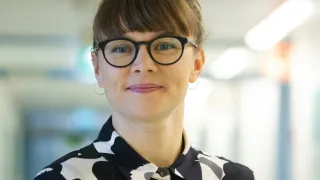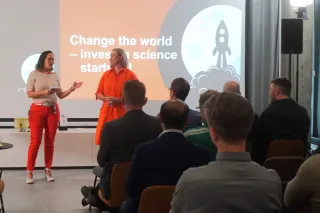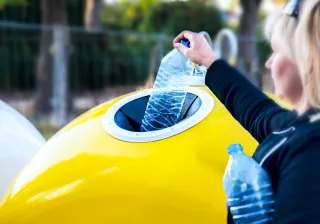In November, Ilona Leppänen received a Finnish and a European award for her work on cellulose at VTT. She devises ideas and develops ways to replace plastic and recover microplastics from water.
Global material challenges are familiar to many, but the solutions to these challenges are still relatively unknown, as most of them are still coming to fruition in laboratories. Ilona Leppänen works as a researcher in one of these laboratories in the functional cellulose team at VTT.
“In this field, there is no need to think about why you come to work in the morning. The goal is to solve big global problems, and that is a great motivator,” says Leppänen.
Global problems include microplastics carried in water that can pass through ordinary filters in domestic washing machines and water treatment plants. Leppänen has researched and developed nanocellulose films that can bind microplastic fragments.
“Next, we aim to make a nanocellulose film that works as a selectively permeable membrane that could filter the microplastics from the water flowing through it,” says Leppänen.
Award-winning catcher of microplastics
The 29-year-old microplastics catcher recently caught the attention of a jury at the European Paper Industry Association, CEPI, and in November she was one of three young researchers awarded in the annual Blue Sky Young Research & Innovation Award competition.
Leppänen’s ideas on microplastics also won the ForestBioPitch competition, which focuses on the bioeconomy. During this autumn, the participants discussed ideas with entrepreneurs and start-up funders and mapped out the journey of their ideas from the labs to a viable business. The competition was organised by Finnish Forest Product Engineers' Association, the FinnCERES flagship project, VTT, and the start-up accelerator Kiuas.
“Competition wins are important achievements for me, and so is my first peer-reviewed article published last year, which will become part of my dissertation. The subject of the article was a cellulose films, which could be used to replace plastic films in packaging.”
The future of bio-based materials will be partly influenced by Leppänen and her colleagues’ research where they look for alternatives to elastane fibre, which makes fabrics comfortable but unrecyclable. They chose to use cellulose and silk protein as raw materials.
Experimental work and exchange of ideas
Research and development based on cellulose tends to attract wood and forest product engineers. However, in recent years more and more chemists like Leppänen have joined the group, whose studies have focused on biomaterials.
“Master's studies in biosystems and biomaterials provide a good understanding of cell biology, which has been very useful,” says Leppänen. In any case, according to Leppänen, the best lessons and insights are provided by experimental work with its successes and failures.
“A very important part of my work is also exchanging ideas with colleagues both at my own workplace and at industry conferences. These types of conversations always offer thoughts that don’t come to mind when you are so closely wrapped up in your own work.”





